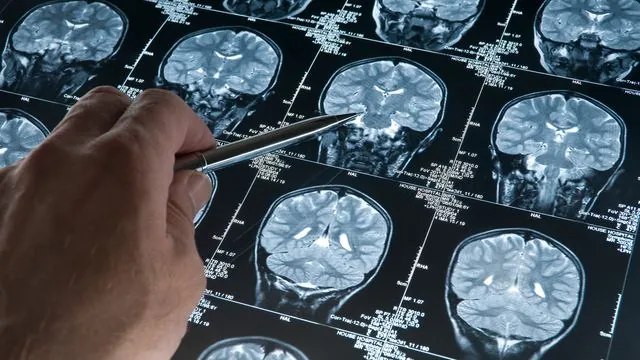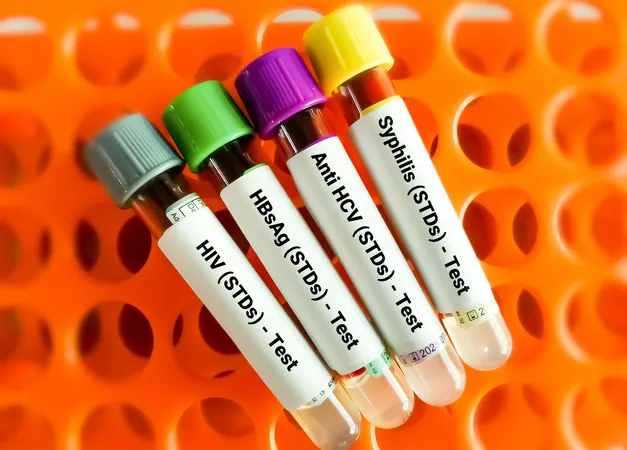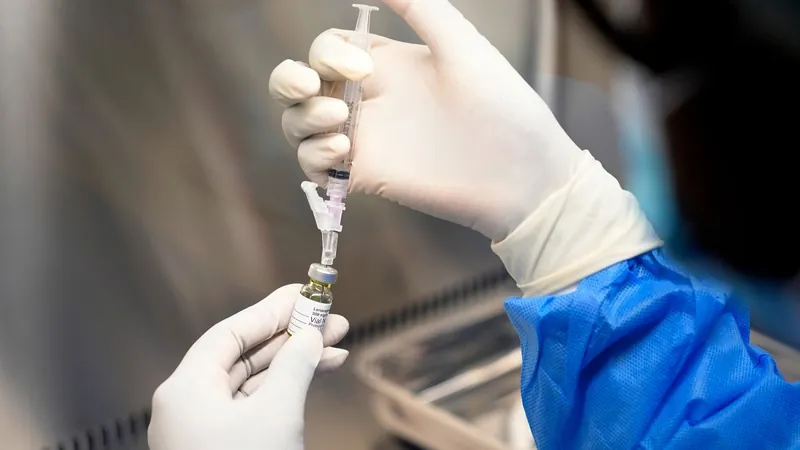
Breakthrough in Alzheimer's Treatment: Low-Intensity Brain Stimulation Could Restore Neuron Health!
2025-07-02
Author: Sarah
A New Hope for Alzheimer’s Disease Patients
Alzheimer’s disease (AD) is a devastating neurodegenerative disorder that impacts millions of elderly individuals globally, severely impairing their cognitive functions and memories. The underlying issue? A breakdown in the brain's synaptic plasticity—the ability to strengthen or weaken connections between neurons, essential for learning and memory. As this plasticity diminishes, individuals experience increased memory loss and a significantly reduced quality of life. Currently, there is no cure for AD, and existing treatments only manage symptoms.
The Power of Brain Stimulation Therapy
Emerging studies suggest that a promising non-invasive technique known as repetitive transcranial magnetic stimulation (rTMS) could be a game-changer. This innovative therapy utilizes electromagnetic pulses to stimulate targeted areas of the brain and boost synaptic plasticity, showing potential for treating dementia and other neurodegenerative diseases. However, individual responses to rTMS treatment vary widely, and the precise workings of this technique remain poorly understood.
Exciting Research Unveiled
A recent groundbreaking study by researchers at the University of Queensland and the Wicking Dementia Research Centre reveals exciting insights into rTMS’s effects on synapses in mice suffering from Alzheimer’s. Their compelling findings, published in Neurophotonics, mark a significant step forward in dementia research.
The Mechanism: Unpacking Neurons and Synapses
Dr. Barbora Fulopova, the lead researcher, elaborated on the study’s focus: examining how rTMS affects axonal boutons, the crucial points where neurons communicate. By analyzing two types of excitatory boutons, known as 'terminaux boutons' (TBs) and 'en passant boutons' (EPBs), the researchers aimed to quantify changes in synaptic structure and function.
Rounding Up the Data: What Did They Find?
The innovative research utilized genetically modified mice displaying symptoms akin to Alzheimer’s, allowing the research team to visualize changes over time through two-photon imaging. They monitored the dynamics of axonal boutons before and after a single rTMS session, comparing the AD mice to healthy counterparts.
The results were striking: while both TBs and EPBs in Alzheimer’s mice appeared as dense as those in healthy models, the turnover of these boutons was significantly lower prior to rTMS. This decrease was likely due to the detrimental effects of amyloid plaque buildup, a hallmark of Alzheimer’s.
After a single low-intensity rTMS session, TB turnover surged—showing an astonishing 213 percent increase in Alzheimer’s-afflicted mice within two days! Although this heightened activity waned by the eighth day, the fact that levels rebounded to those seen in healthy mice suggests rTMS might restore normal synaptic function.
A Promising Path Forward
Dr. Fulopova emphasizes the groundbreaking nature of their discovery, highlighting that not only did pre-synaptic boutons respond favorably to rTMS, the findings may pave the way for targeted therapies for Alzheimer’s. Given the established link between synaptic dysfunction and cognitive decline, this could represent a major leap in treatment strategies for the condition.
The Road Ahead
While further research is essential, the promise shown by rTMS could be a beacon of hope in alleviating the challenges faced by Alzheimer’s disease patients. More targeted therapies can enhance patient quality of life, making this a pivotal moment in the fight against dementia.



 Brasil (PT)
Brasil (PT)
 Canada (EN)
Canada (EN)
 Chile (ES)
Chile (ES)
 Česko (CS)
Česko (CS)
 대한민국 (KO)
대한민국 (KO)
 España (ES)
España (ES)
 France (FR)
France (FR)
 Hong Kong (EN)
Hong Kong (EN)
 Italia (IT)
Italia (IT)
 日本 (JA)
日本 (JA)
 Magyarország (HU)
Magyarország (HU)
 Norge (NO)
Norge (NO)
 Polska (PL)
Polska (PL)
 Schweiz (DE)
Schweiz (DE)
 Singapore (EN)
Singapore (EN)
 Sverige (SV)
Sverige (SV)
 Suomi (FI)
Suomi (FI)
 Türkiye (TR)
Türkiye (TR)
 الإمارات العربية المتحدة (AR)
الإمارات العربية المتحدة (AR)